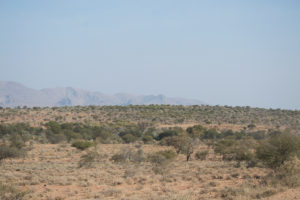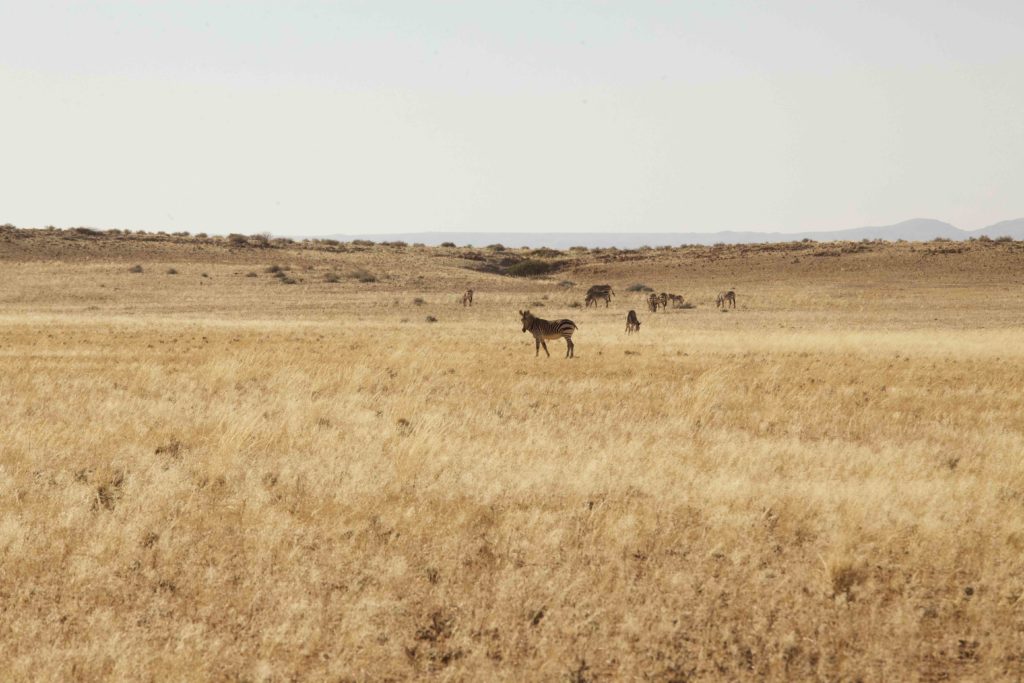Communal land is described as a mostly rural territory that is in possession of a community, rather than an individual or company. This means that each member has a right to use the property or a portion. The land is mostly used for subsistence farming and small scale commercial farming. In Namibia, land is divided into communal land, private land and national parks. The majority of Namibia is considered communal land and this type of living makes up about 65 percent of Namibia’s population. In 1990, when Namibia gained independence, homelands and tribal lands for non-whites were re-designated as communal lands. The Namibian government owns large amounts of property, which are given to people under the right circumstances. This is very different than the way things are done in the United States.

Our bus drives past communal land located in Windhoek. The land goes on for miles as you see the mountains in the background. The use of communal land varies, depending on the vegetation.
Throughout the first week of class, we watched a movie called The Gods Must Be Crazy which was about San people who lived on the Kalahari Desert. We learned that they too have a communal livelihood. They share everything between their tribe, whether that be the food they hunt or the tools used to prepare their food. The San did not know about civilization outside of their tribe. When a coke bottle falls from the sky into their possession, problems arise. The San quickly realize how useful the coke bottle is, and start battling with ownership over the item. Arguments arise over who gets to use it and when it is used. As soon as the coke bottle is returned to the Gods, the arguments stop and they continue living life peacefully, as it was lived before.
While at the market in Swakopmund, I met a man who was part of the bushman tribe. He grew up on communal land near Etosha. He explained that living on communal land was helpful to his family. They were able to maintain a farm that otherwise would not have been possible. He also shared interesting information about the animals that roamed through their communal land. He explained that elephant herds were very dangerous meaning school was often closed for the day. Animals of any species have access to roam communal land allowing for diseases to spread to farmer’s livestock. This also created problems with livestock being killed and eaten by roaming animals.

Mountain Zebras roam the land in Namibia disregarding fencing. Wild animals have access to all land, including communal lands, that often contain large amounts of livestock, creating issues for farmers’ crops and livestock.
Communal lands have many benefits to those living on it. Owning land is not an easy duty, but when land is communal, it allows each person to prosper with more ease. Each member takes what is needed, but provides the labor or food to makeup for what is taken. Communal lands are widely known for their use of farming. Subsistence farming and small scale commercial farming are the principal economic activities of communal lands. The farms are often unfenced, allowing for cattle and other animals to roam freely. This may cause issues between different individual farmers because of different diseases that could spread.
I have learned so much about this country and how their land regulations work. Learning about growing up on communal land from a personal interaction at the Swakopmund market gave me a better understanding of how it works. Communal land has many benefits which allows for people to grow while their farms grow as well.